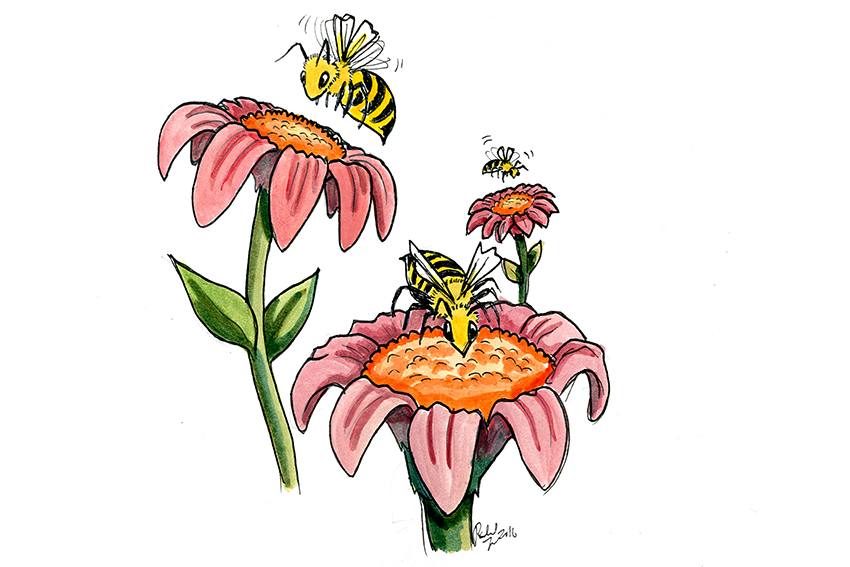Bees collect pollen and nectar from flowers, but UT research shows food might not be all they pick up while buzzing between blooms.
Former UT postdoctoral researcher Quinn McFrederick published a study in August that showed some species of bacteria found on flowers can be transmitted to a bee’s microbiome, the community of bacteria in its gut.
The most common of these bacteria was Lactobacillus micheneri, a bacteria normally associated with fermented foods. McFrederick said these bacteria could play an important role in bee health.
McFrederick also found this species of bacteria accumulates more on flowers pollinated by wild megachilidae bees. Wild megachilidae bees, which include leafcutter bees, are solitary bees which carry pollen on the underside of their abdomens.
Lactobacillus micheneri, is considered a ‘healthy’ bacteria and is completely harmless to humans, according to McFrederick.
“What [Lactobacillus micheneri] do is they change the environment that they’re a part of, they excrete acids that can make their environment more acidic — so they might be protecting the bee’s food from spoiling,” McFrederick said.
The wild megachilidae bee picks up Lactobacillus micheneri during the pollination process, which then becomes part of the bee’s microbial community, according to McFrederick.
The team began field work at UT in Ulrich Mueller’s lab in 2013. In late 2014, McFrederick left UT and continued the research at the University of California at Riverside. McFrederick said the team gathered most of the data from the Hornsby Bend Bird Observatory near Austin International Airport.
The team used trap nests, or pieces of wood with holes in them, to catch the bees for the study. McFrederick said if the traps are constructed with specific measurements, the bees will nest in them.
To examine the bees’ pollination process, the team covered an area of flowers with mesh bags, while leaving another area uncovered. McFrederick said they found the quantity of bacteria was higher on flowers that wild megachilidae bees had access to, suggesting the bees play an important role in the transmission of the bacteria from flower to flower.
McFrederick said the bacteria was still present on the mesh-covered flowers, indicating it might accumulate on these flowers in other ways, either from the soil or through tiny insects such as thrips that could fit through the holes in the flowers’ coverings.
Learning about how bee microbiomes develop is still an ongoing process, according to McFrederick.
“We know that with honeybees and bumblebees, they obtain their microbes in their guts from interactions within their huts and colonies,” McFrederick said. “We found that the exact same bacteria that’s in the wild megachilidae bees’ nests, food, and larvae, can also be found on flowers.”
McFrederick said because these species of the Lactobacillus genus are not harmful to bees or humans, exploring the uses of these bacteria presents a potential avenue for research.
“We think [Lactobacillus micheneri] might be used for [treating] ailments-we haven’t been able to show that yet, but that’s a lot of the research we’re doing,” McFrederick said.
Seton Ulhorn, director of UT’s BEEVO Beekeeping Society, said informing the public about bees can help preserve these pollinators, and by extension environmental microbial diversity.
“As a beekeeper, I’ve noticed that introducing people to the lives of bees … inspires them to take action to protect our pollinators,” Ulhorn said.
McFrederick said he and his research team have tried to lay the foundation for future bee research.
“What we’re learning is that … flowers are not just for food, but also transmitting bacteria that we think might help us,” McFrederick said. “We want to see how we can use those microbes to protect pollinator populations in the future.”















